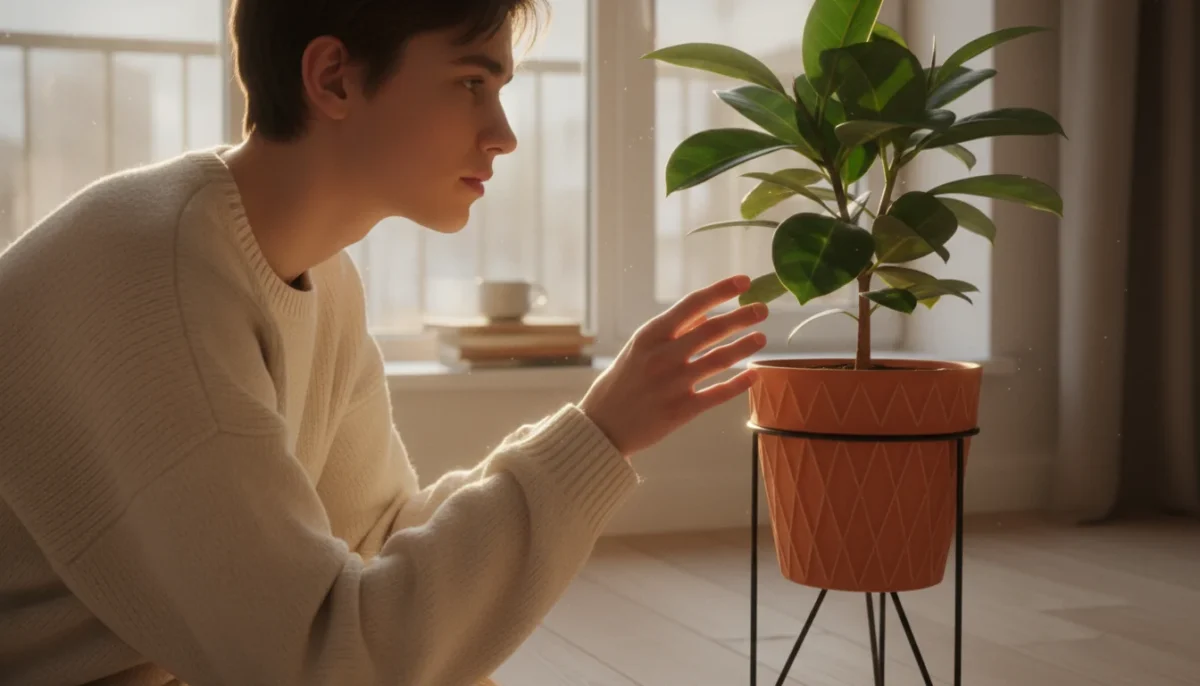You desire the lush beauty and impressive stature of an indoor tree, even within the cozy confines of an apartment or small home. This guide provides practical, actionable insights for selecting and caring for the perfect indoor tree that thrives in compact living spaces. Many people believe large plants are exclusively for sprawling houses, but you can successfully grow magnificent indoor trees, adding significant life and style to your environment. We focus on low-maintenance varieties and realistic care routines that fit your busy schedule.
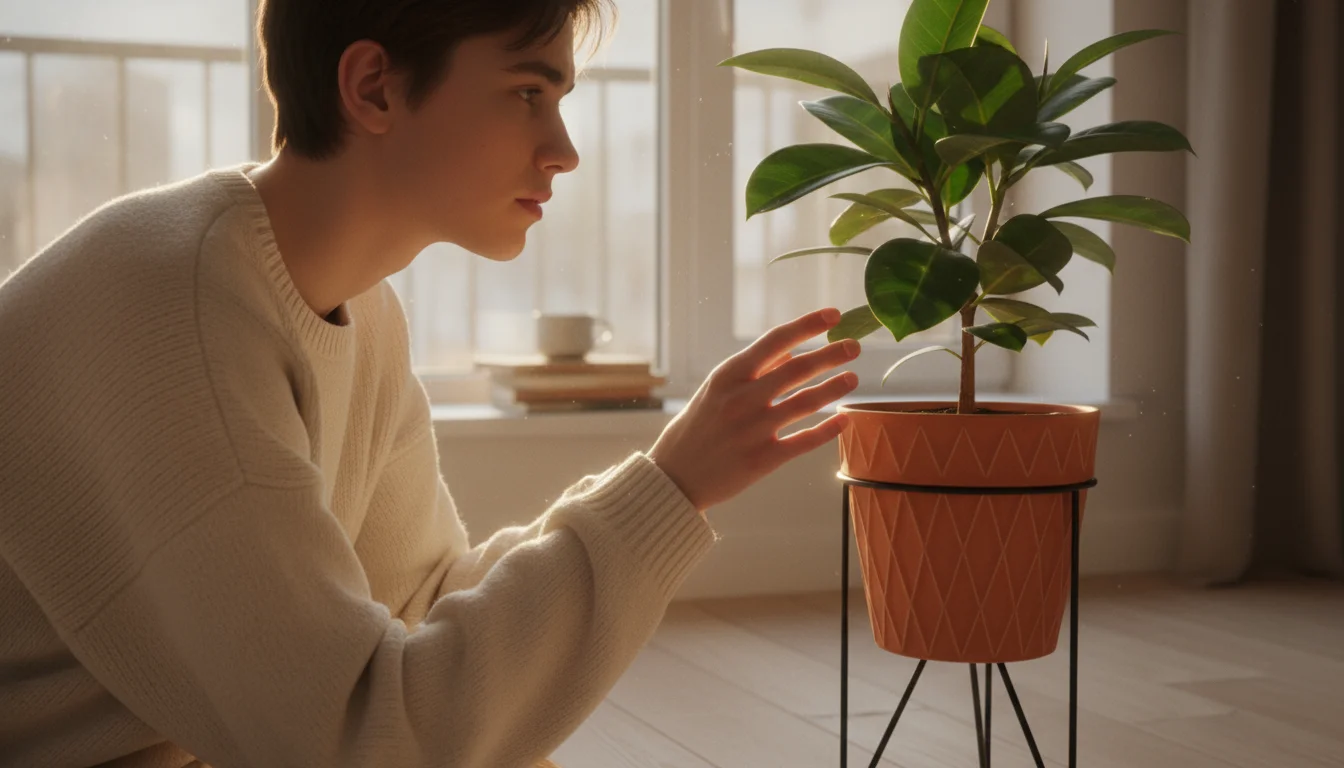
Light Made Simple: Understanding Your Apartment’s Brightness
Light represents the single most critical factor for the success of your indoor trees. Plants convert light energy into food through photosynthesis. Insufficient light leads to stunted growth, yellowing leaves, and susceptibility to pests. Excessive direct sun scorches leaves, causing brown spots and wilting. Understanding the light conditions in your apartment empowers you to select appropriate indoor trees that genuinely thrive.
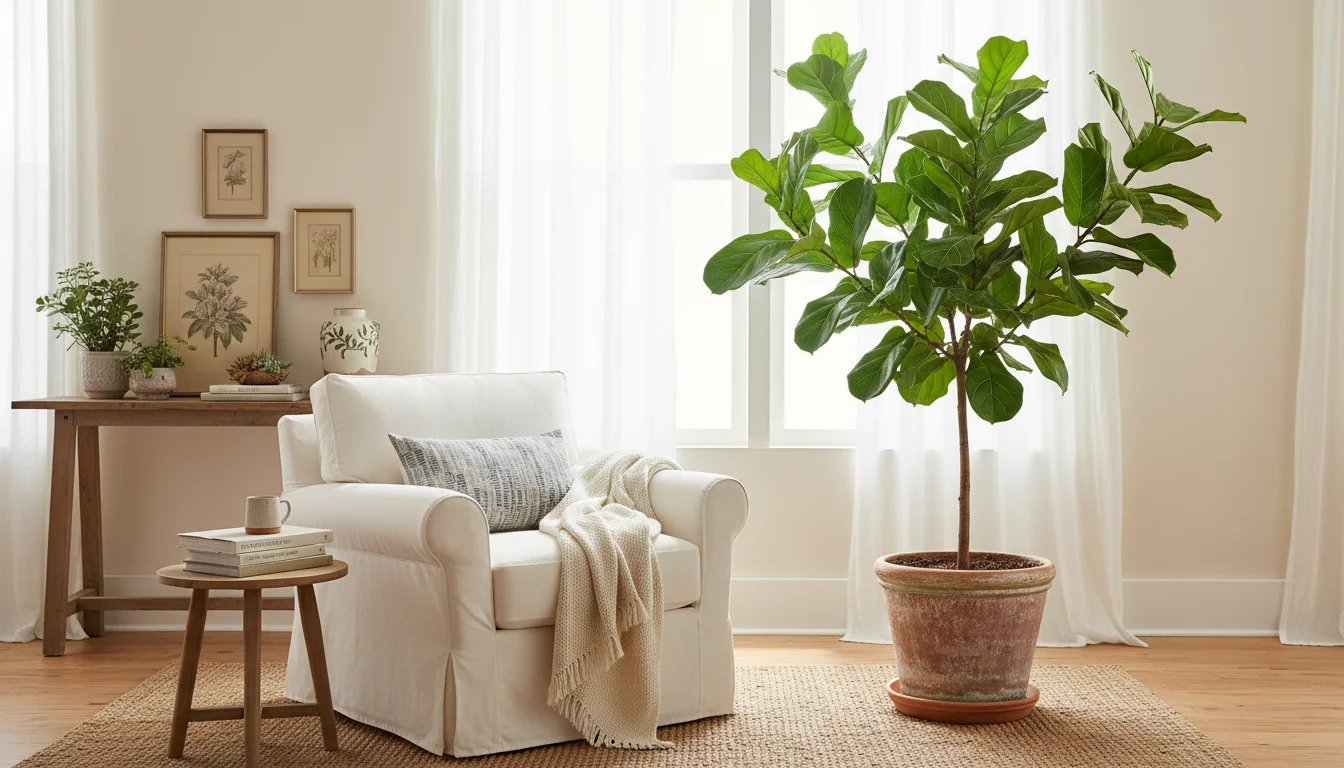
Defining Light Levels for Your Indoor Trees
- Low Light: This area receives very little direct sun, usually found in a north-facing room or more than 10 feet from any window. You might struggle to read a book comfortably without artificial lighting in a low-light spot. Most true indoor trees require more light than this.
- Medium Light (Bright Indirect Light): This is ideal for most indoor trees. An area with bright indirect light means your plant sits near a window, but direct sunlight never hits its leaves. Imagine a spot within 5 to 8 feet of an east or west-facing window, or a south-facing window with a sheer curtain diffusing the light. The light appears bright, but soft. For more detailed guidance on light requirements, consider resources from the Missouri Botanical Garden.
- Bright Light (Direct Light): This refers to a spot where the sun’s rays directly hit your plant for several hours each day. This usually occurs near south or west-facing windows, especially during the afternoon. While some indoor trees tolerate or even prefer a few hours of direct morning sun, many suffer from intense afternoon exposure. Always verify the specific needs of your chosen tree.
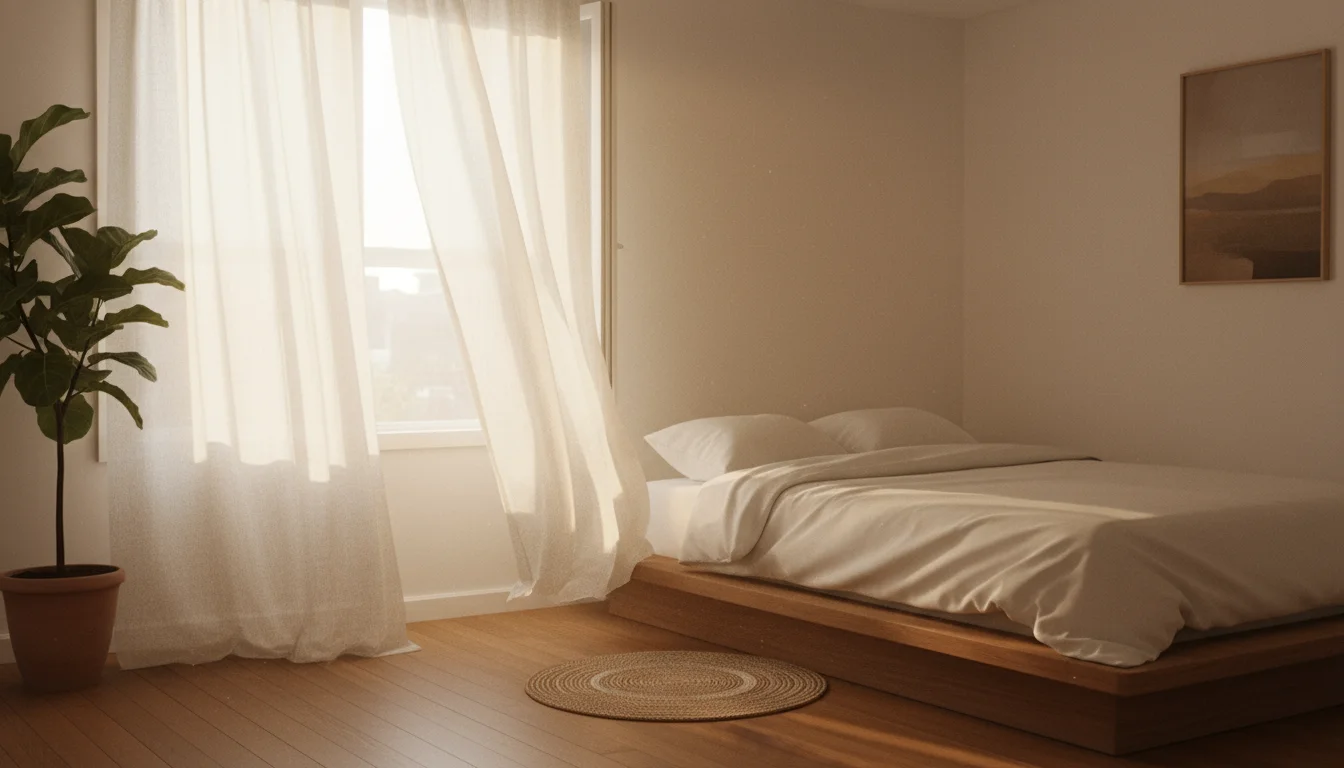
Assessing Your Apartment’s Windows
The orientation of your windows directly impacts the light available for your small apartment plants:
- North-Facing Windows: These provide consistent, soft indirect light all day. This suits plants needing medium to low light, but it often lacks the intensity for many indoor trees to truly flourish.
- East-Facing Windows: They offer gentle morning sun for a few hours. This makes them excellent for indoor trees that appreciate bright indirect light and a little direct morning exposure. The light is less intense and less likely to scorch leaves.
- West-Facing Windows: These deliver strong afternoon sun, which can be intense. Place plants a few feet away or use sheer curtains to diffuse the light, creating bright indirect conditions. Without diffusion, direct western sun can be too harsh for many indoor tree varieties.
- South-Facing Windows: These provide the strongest, most consistent light throughout the day. While excellent for sun-loving plants, most indoor trees prefer bright indirect light here. Use sheer curtains or position plants further back from the window to prevent scorching.
Always observe your plant. If leaves turn pale or stretch significantly towards the window, it needs more light. If leaves develop crispy brown spots, the light may be too intense.
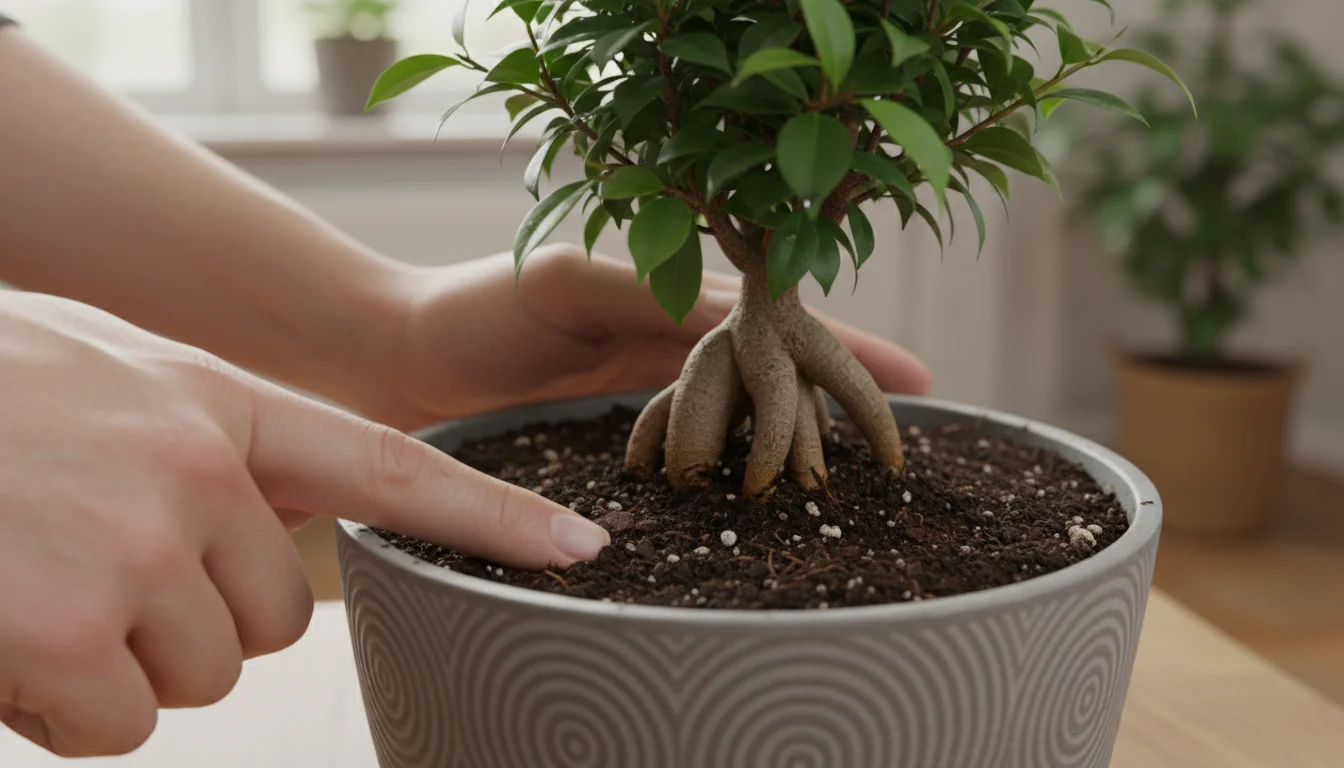
Watering Wisdom for Indoor Trees: Preventing Over and Under-Hydration
Proper watering prevents many common houseplant problems, especially for large indoor plants like trees. Overwatering leads to root rot, the silent killer of indoor plants. Underwatering causes stress, wilting, and leaf drop. Master the art of watering, and your indoor tree will thank you.
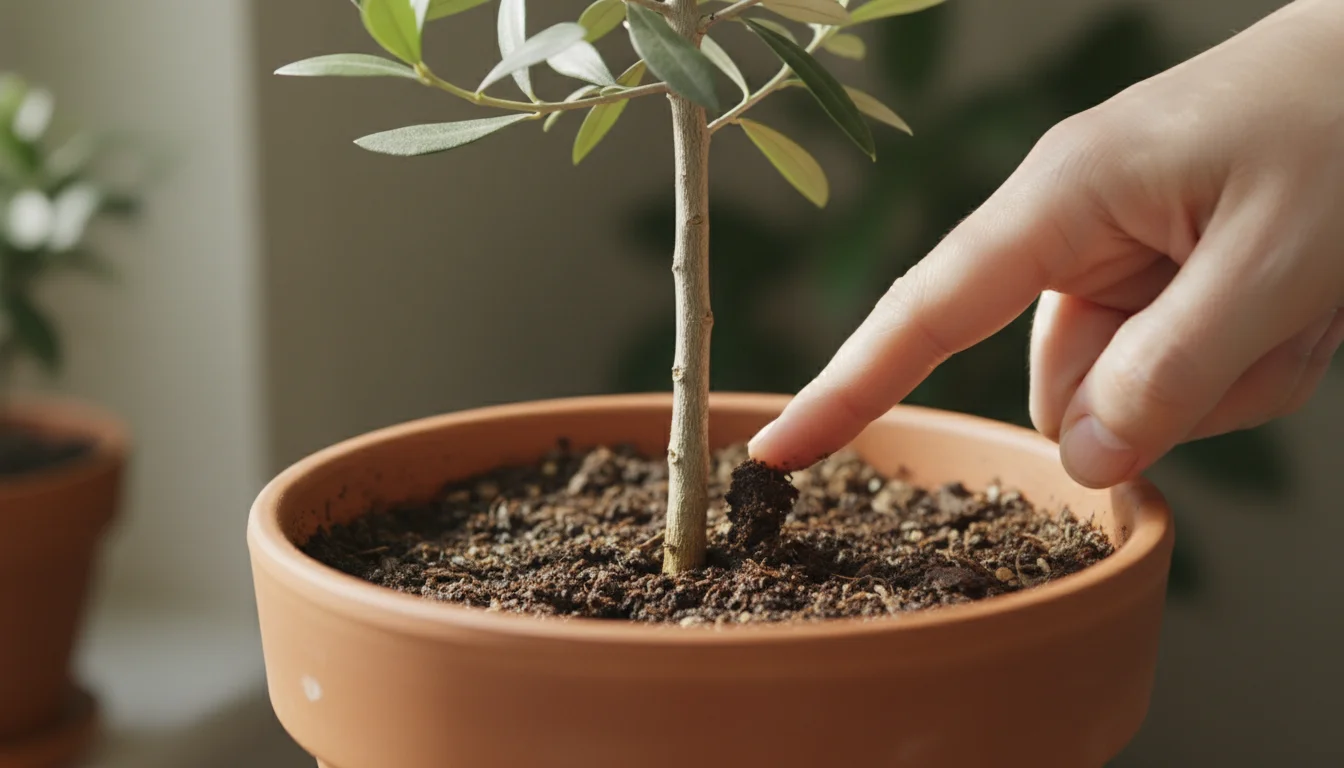
The Finger Test: Your Best Watering Tool
Forget strict schedules. Your plant’s watering needs vary based on light, humidity, temperature, and pot material. The most reliable method to determine when to water is the finger test:
- Insert your index finger about two inches deep into the potting mix. For larger pots, go deeper, around 3-4 inches.
- Feel the soil. If it feels moist, wait a few more days.
- If the soil feels dry at that depth, it is time to water.
This simple test prevents you from watering a still-soggy plant. You can also use a wooden chopstick or a moisture meter for larger pots, inserting it to the bottom and checking the dampness when you pull it out. University extension services, such as the University of Minnesota Extension, provide excellent resources on proper watering techniques.
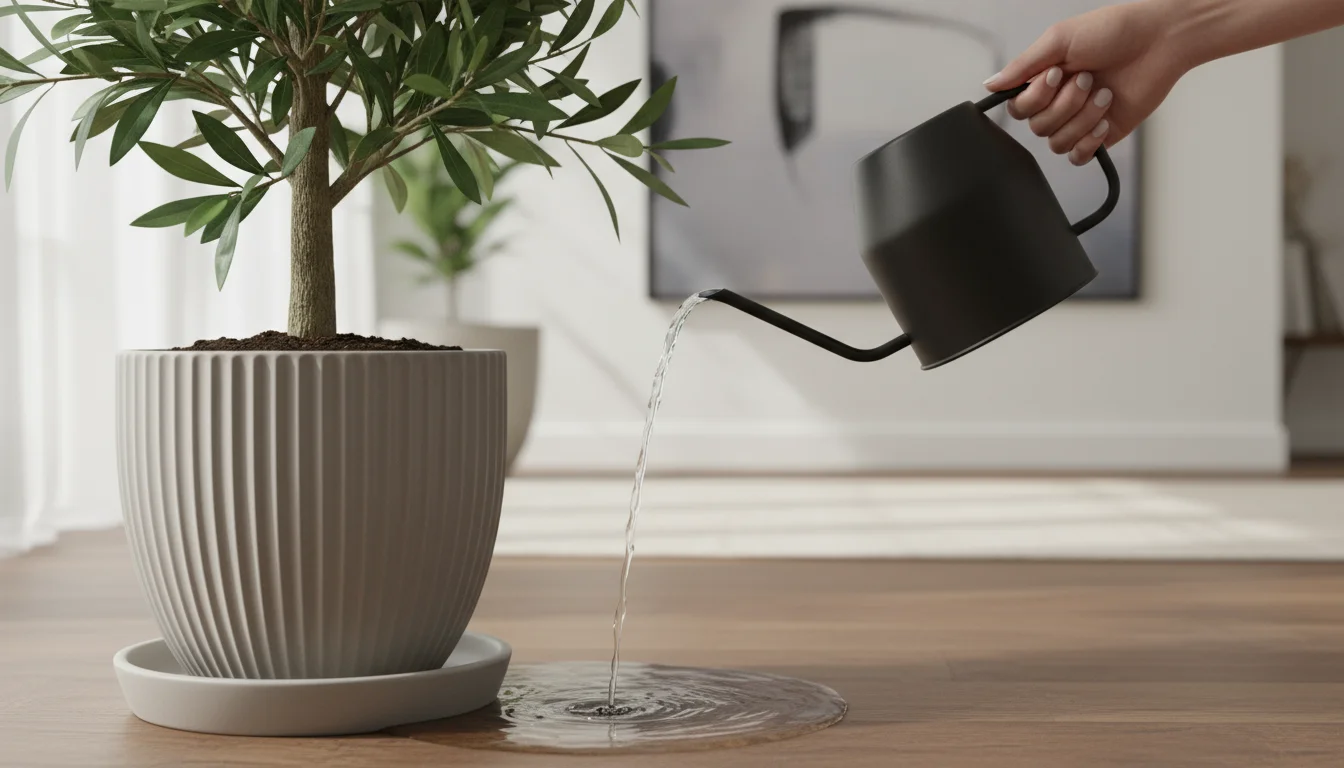
How to Water Your Indoor Tree Effectively
When you determine your tree needs water, water thoroughly:
- Pour water slowly and evenly over the entire soil surface until it drains out of the pot’s drainage holes.
- Ensure the pot sits on a saucer or in a cachepot to collect excess water.
- Allow the pot to drain for at least 15-30 minutes.
- Empty any standing water from the saucer. Never let your indoor tree sit in standing water, as this suffocates roots and causes root rot.
Consider using water-wise habits. Collect rainwater for your plants, or let tap water sit out for 24 hours to allow chlorine to dissipate, which benefits sensitive plants.
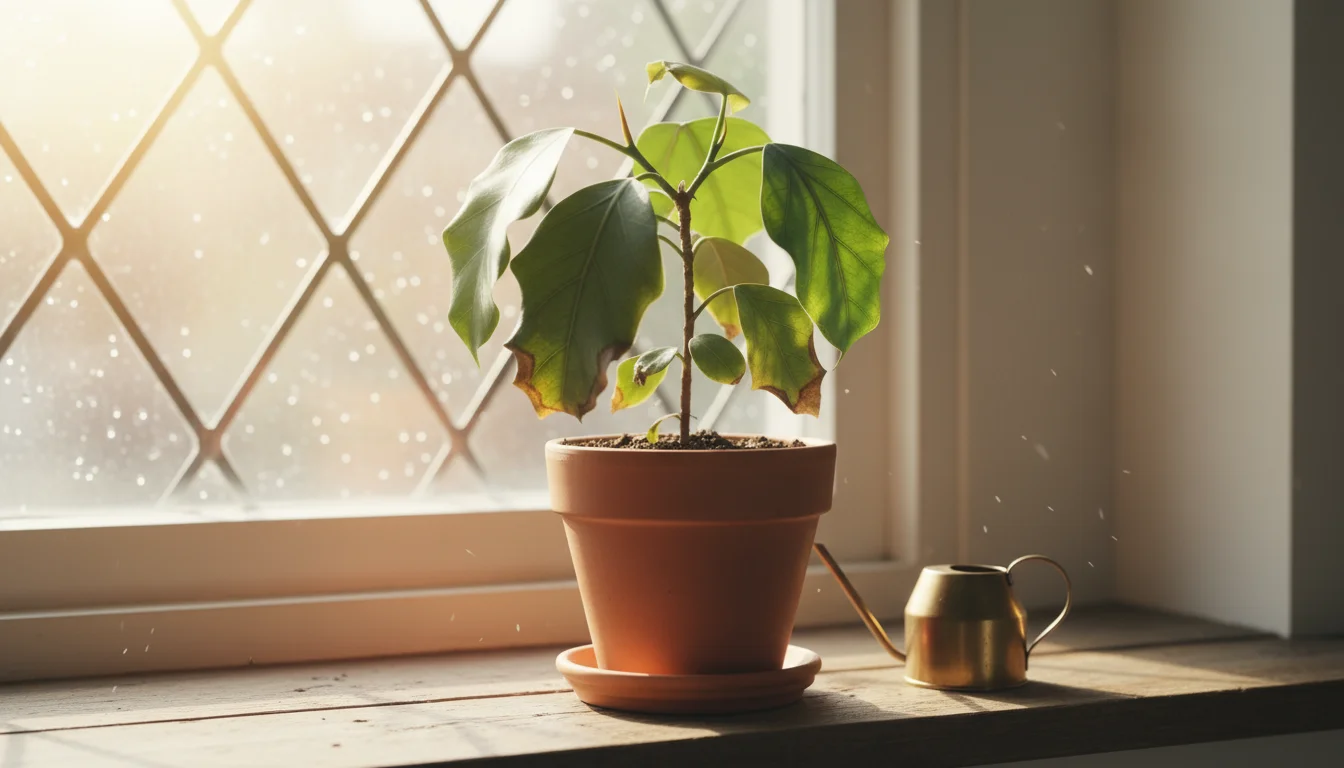
Recognizing Signs of Watering Issues
- Overwatering: Yellowing lower leaves that feel soft or mushy, a foul odor from the soil, brown leaf tips with yellow halos, stunted new growth.
- Underwatering: Wilting leaves, crispy brown leaf edges, overall droopiness, dry and compact soil that pulls away from the pot’s sides.
Adjust your watering frequency based on these visual cues. It is easier to revive an underwatered plant than an overwatered one, so err on the side of caution if you are unsure.
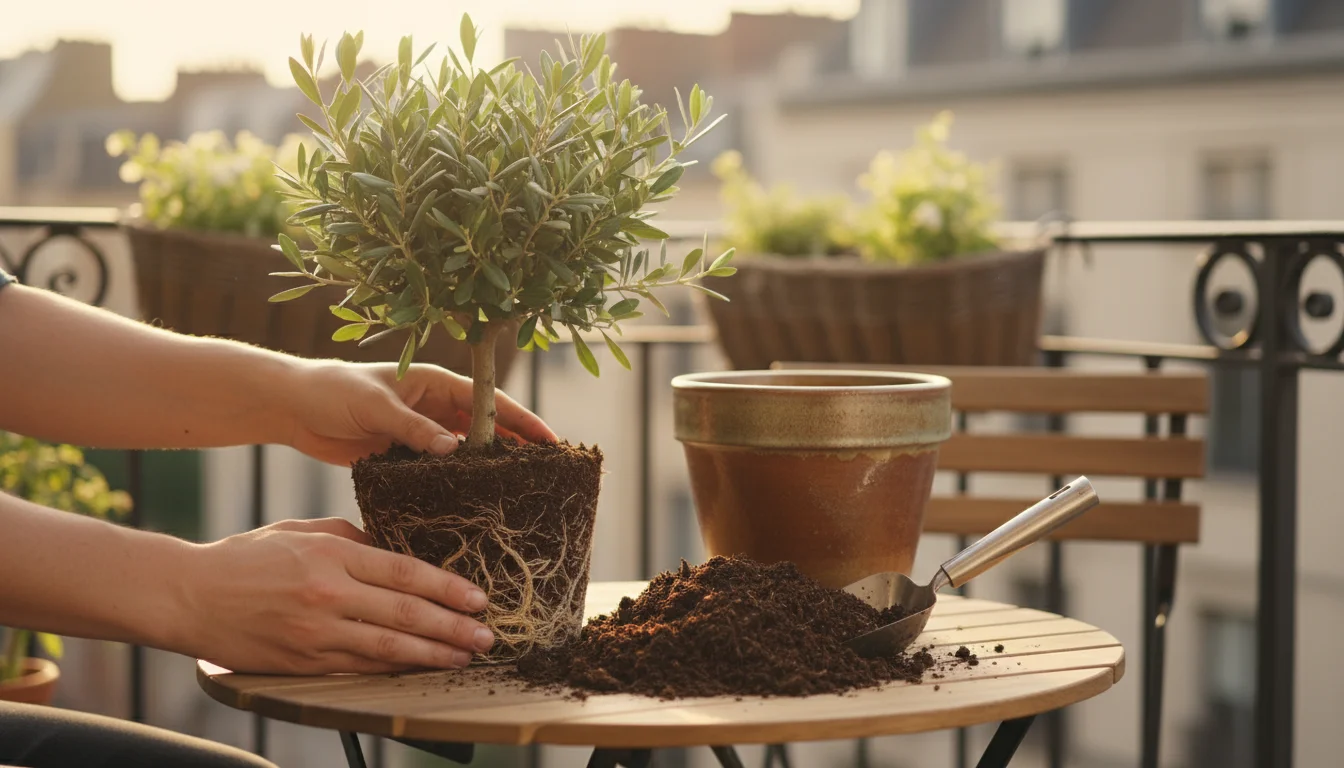
Potting Mix and Repotting: Supporting Your Tree’s Growth
The right potting mix provides aeration, moisture retention, and nutrients crucial for your indoor tree’s health. Repotting, when necessary, prevents your tree from becoming root-bound and ensures continued growth. Opting for sustainable, peat-free mixes benefits your plants and the environment.
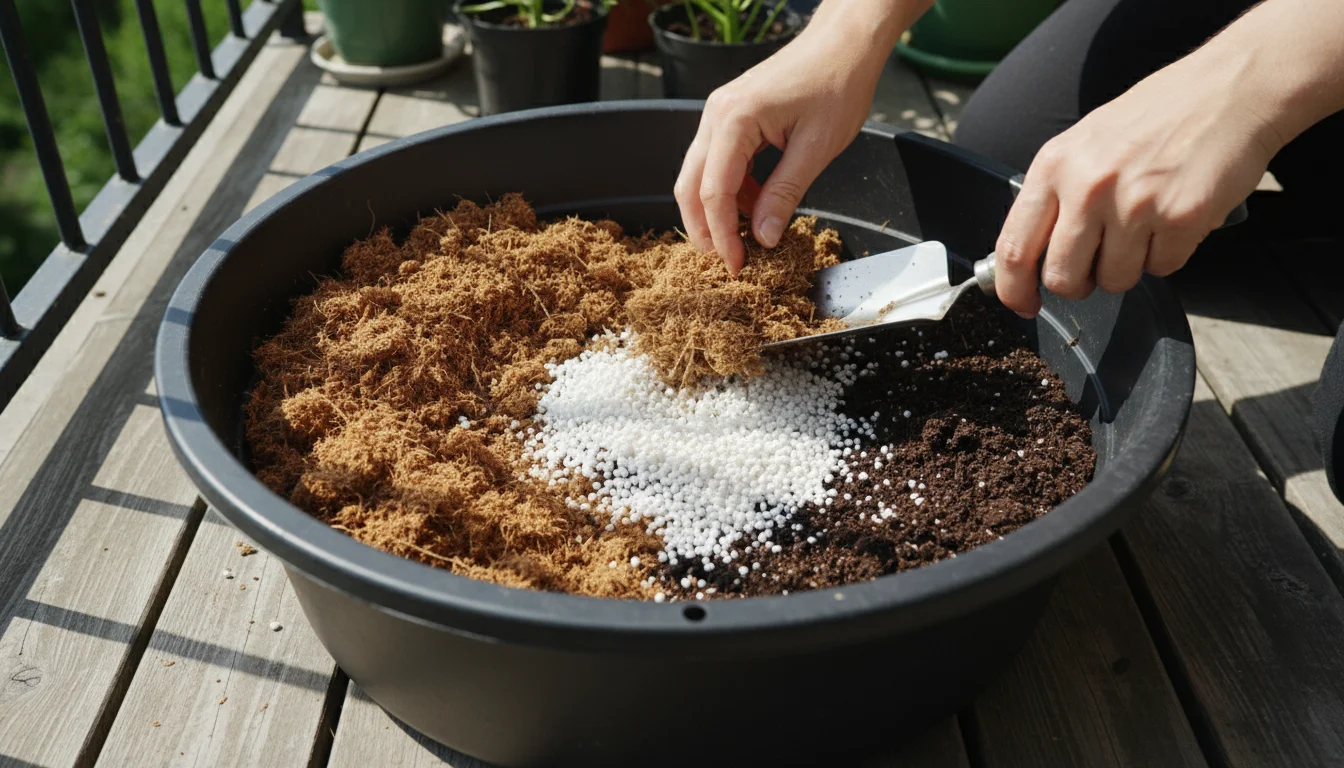
Choosing the Best Potting Mix for Indoor Trees
Most indoor trees thrive in a well-draining, airy potting mix. Avoid dense, heavy garden soil, which compacts easily and retains too much moisture for container plants. Look for peat-free options, often composed of coco coir, composted bark, and perlite or pumice. Coco coir is a sustainable alternative to peat, offering excellent water retention and aeration.
- Components of a Good Mix:
- Coco Coir or Composted Bark: Forms the base, providing structure and moisture retention.
- Perlite or Pumice: Light, porous materials that vastly improve drainage and aeration, preventing compaction. Aim for at least 20-30% of your mix to be perlite or pumice.
- Worm Castings or Compost: Adds essential nutrients naturally, promoting robust growth.
You can purchase specialized indoor potting mixes or create your own by blending these components. A good quality mix prevents many issues associated with root health, especially for large indoor plants.
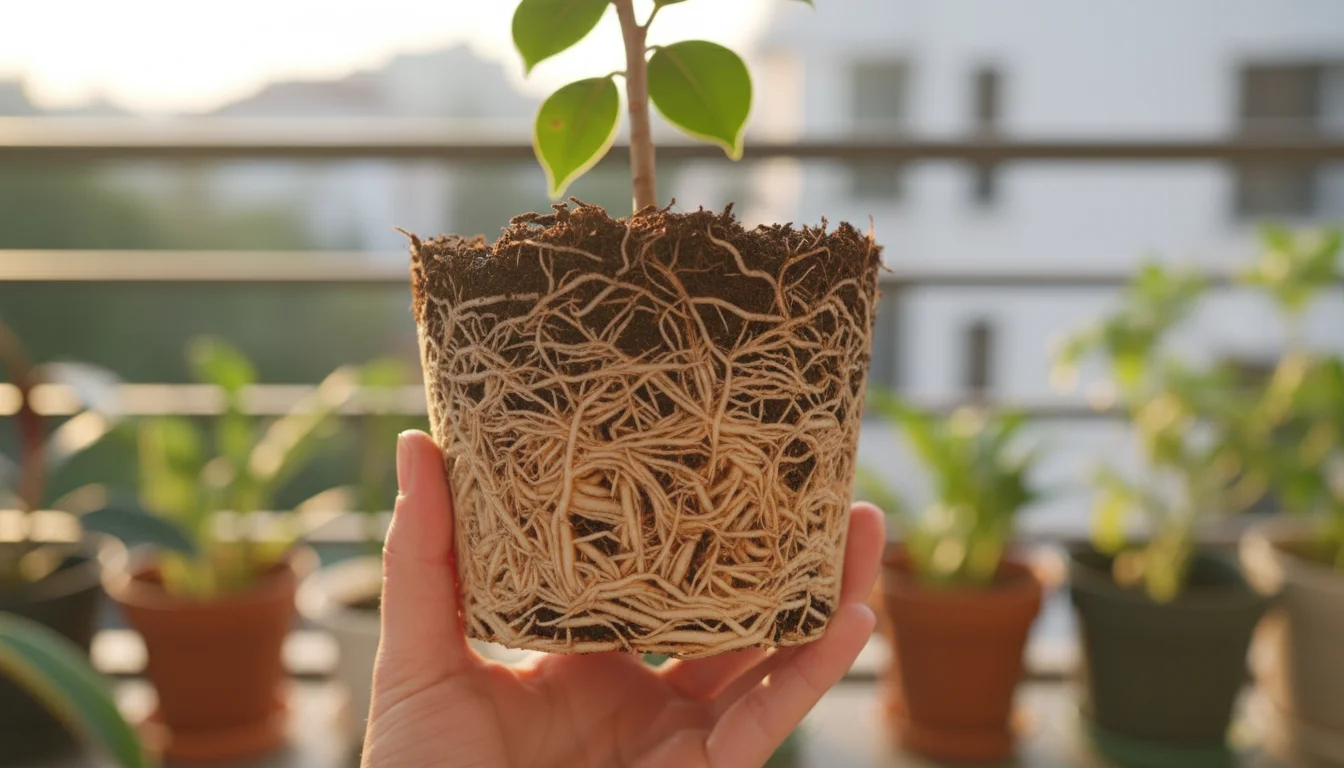
When and How to Repot Your Indoor Tree
Repotting gives your indoor tree fresh nutrients and more room for root expansion. You do not need to repot every year. Signs your tree needs a larger home include:
- Roots growing out of the drainage holes.
- Water pooling on the surface and not draining easily.
- Stunted growth despite proper care.
- The tree becoming top-heavy and unstable.
- Roots circling tightly around the inside of the pot when you gently lift the plant.
Step-by-Step Repotting Process:
- Choose the Right Pot: Select a new pot only one size larger than the current one, typically 1-2 inches wider in diameter. Jumping to a much larger pot can lead to overwatering, as the excess soil retains too much moisture for the current root system. Ensure the new pot has drainage holes.
- Gather Supplies: New potting mix, gloves, a trowel, and a tarp or newspaper to protect your floor.
- Prepare the Tree: Water your tree a day or two before repotting to reduce transplant shock.
- Remove the Tree: Gently tip the pot on its side and slide the tree out. You may need to wiggle it or gently tap the pot to loosen the root ball.
- Inspect and Loosen Roots: Gently untangle any circling roots at the bottom of the root ball. Trim off any soft, mushy, or dark roots, which indicate root rot.
- Add New Mix: Place a layer of fresh potting mix at the bottom of the new pot.
- Position the Tree: Center the tree in the new pot, ensuring the top of the root ball sits about an inch below the rim. The soil line should remain at the same level as in its previous pot.
- Fill and Settle: Fill the pot with more potting mix, gently patting it down to remove large air pockets. Do not compact it too densely.
- Water Thoroughly: Water your newly repotted tree thoroughly until water drains from the bottom.
Repotting typically occurs in spring or early summer when plants are actively growing, allowing them to recover quickly. For further insights on sustainable potting mixes, consult Cornell Garden-Based Learning resources.
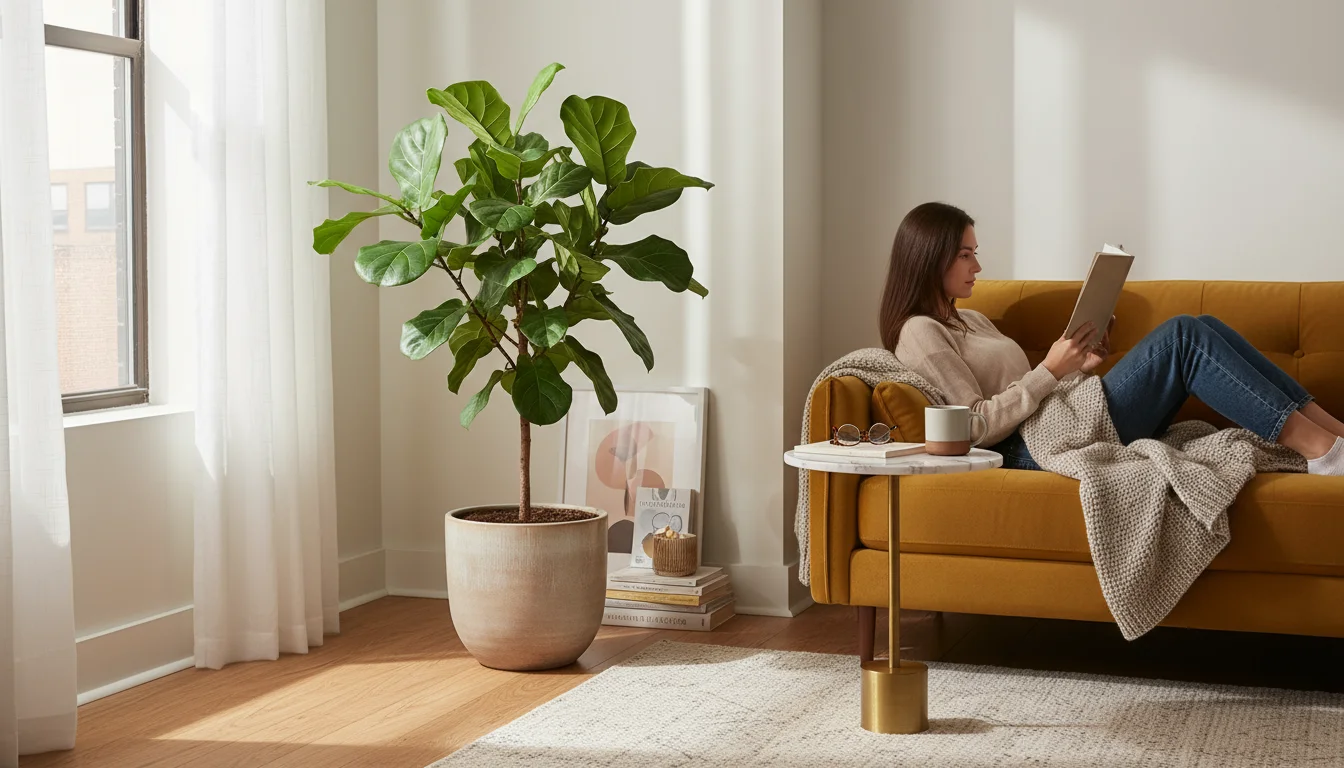
Top Indoor Tree Choices for Small Spaces
You can absolutely incorporate stunning indoor trees into your apartment. The key lies in selecting varieties known for their compact growth, adaptability, and manageable care requirements. These small apartment plants bring significant aesthetic value without overwhelming your living area.
| Indoor Tree | Light Preference | Watering Frequency (Finger Test) | Mature Size (in pot) | Key Features & Notes |
|---|---|---|---|---|
| Dracaena fragrans ‘Massangeana’ (Corn Plant) | Medium to Low Indirect Light | When top 2-3 inches are dry. | 4-6 feet tall | Tall, upright growth. Tolerates lower light conditions. Avoid overwatering. Toxic to pets. |
| Ficus lyrata ‘Bambino’ (Dwarf Fiddle Leaf Fig) | Bright Indirect Light | When top 2-3 inches are dry. | 3-5 feet tall | Smaller leaves, more compact than its larger cousin. Needs consistent care, good humidity. Toxic to pets. |
| Ficus elastica (Rubber Plant) | Bright Indirect Light | When top 1-2 inches are dry. | 5-8 feet tall | Glossy, dark leaves. Very adaptable and robust. Can grow quite large but tolerates pruning well. Toxic to pets. |
| Chamaedorea elegans (Parlor Palm) | Low to Medium Indirect Light | When top 1-2 inches are dry. | 2-6 feet tall | Graceful, feathery fronds. Pet-friendly. Tolerates lower light but grows best in medium indirect light. Avoid direct sun. |
| Schefflera arboricola (Dwarf Umbrella Tree) | Medium to Bright Indirect Light | When top 2-3 inches are dry. | 4-8 feet tall | Lush, multi-stemmed growth. Tolerant of varying conditions. Can be pruned to maintain size. Toxic to pets. |
| Pachira aquatica (Money Tree) | Medium to Bright Indirect Light | When top 2-3 inches are dry. | 6-8 feet tall | Distinctive braided trunk and palmate leaves. Generally low maintenance. Non-toxic to pets. |
| Olea europaea (Dwarf Olive Tree) | Bright Direct Light (requires ample sun) | When top 1-2 inches are dry. Needs less in winter. | 3-6 feet tall | Needs abundant sun. Drought tolerant once established. Silver-green foliage. Can produce small olives with proper care. Non-toxic to pets. |
| Araucaria heterophylla (Norfolk Island Pine) | Bright Indirect Light | When top 1-2 inches are dry. | 3-8 feet tall | Soft, symmetrical branches. Not a true pine but resembles one. Needs good humidity. Non-toxic to pets. |
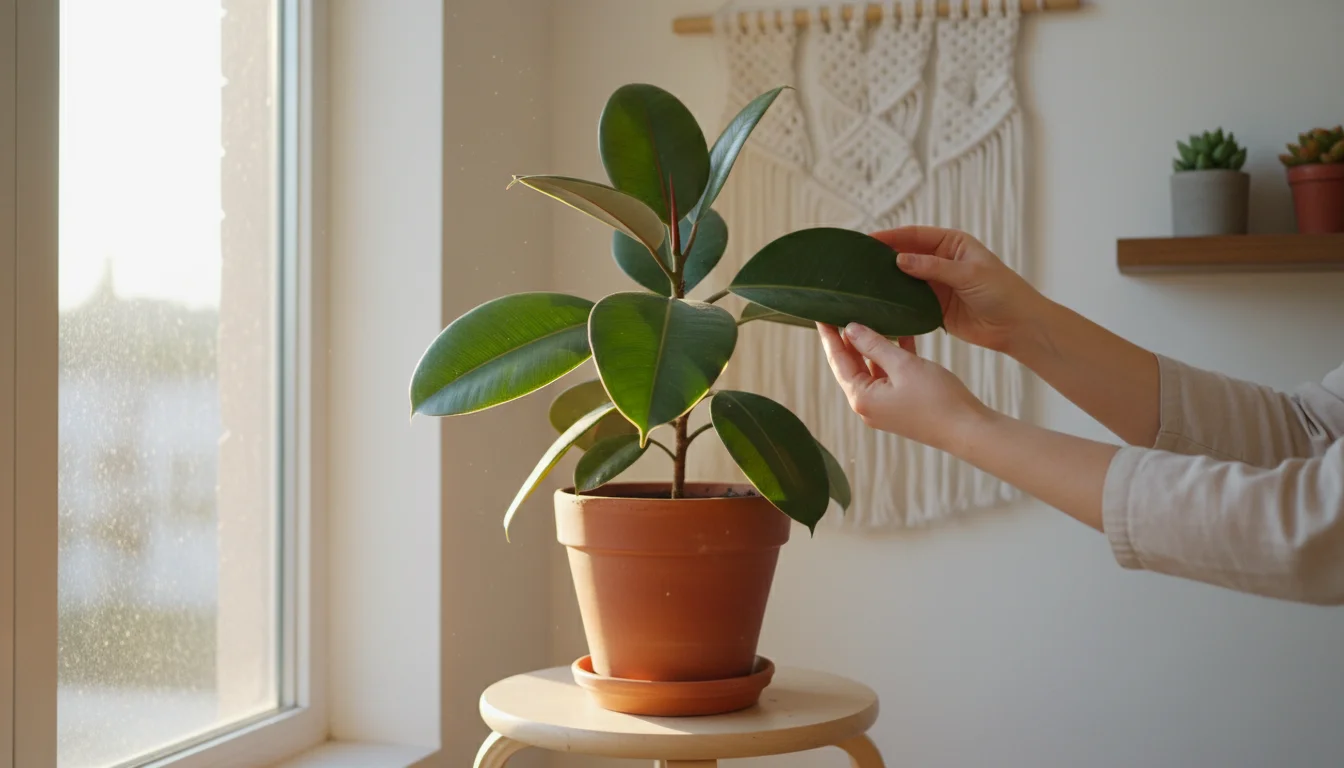
Caring for Your Indoor Tree: Humidity, Pests, and Styling
Beyond light and water, a few additional factors contribute significantly to the health and beauty of your indoor trees. Maintaining adequate humidity, promptly addressing pests, and thoughtful placement ensures your large indoor plants remain vibrant and integrate seamlessly into your small apartment.
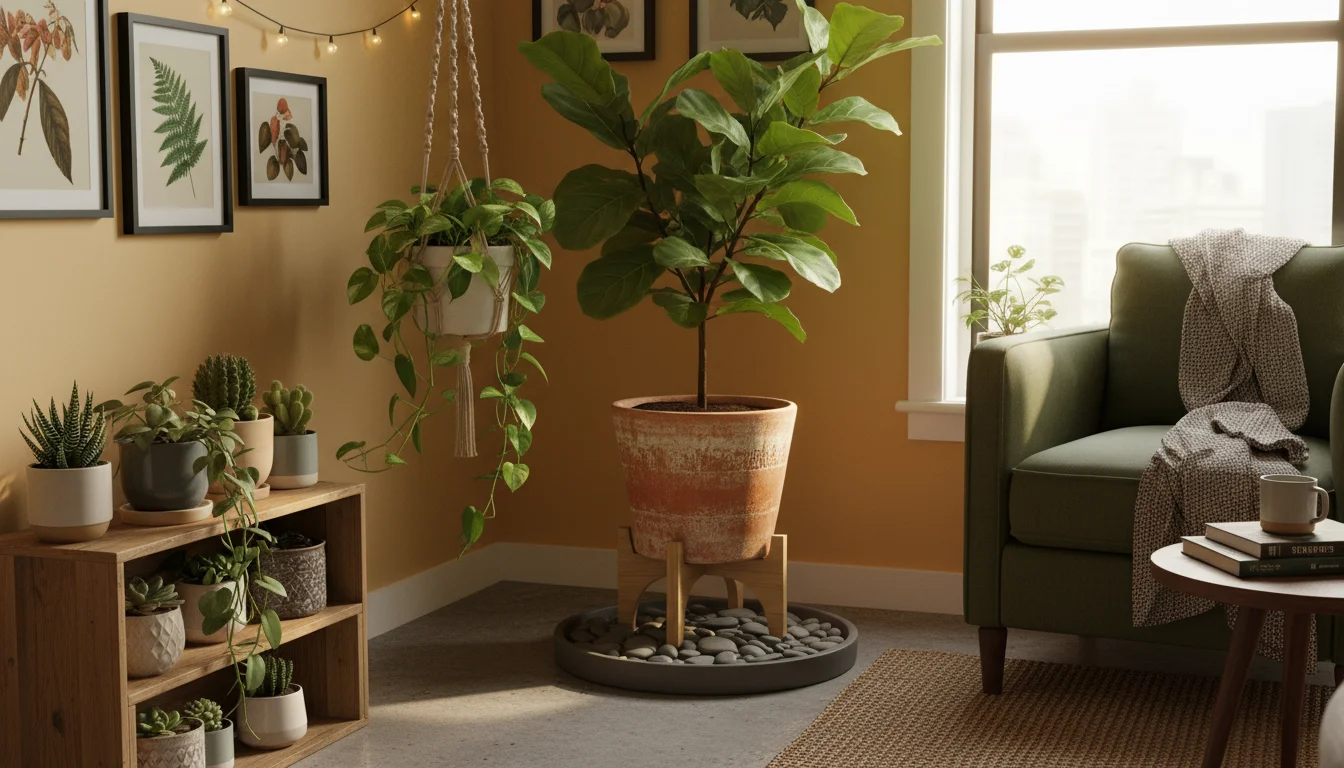
Boosting Humidity for Thirsty Trees
Many popular indoor trees originate from tropical or subtropical regions and appreciate higher humidity than typical household air provides. Dry air can lead to crispy leaf edges, particularly on plants like Fiddle Leaf Figs or Norfolk Island Pines. You can easily boost humidity without specialized equipment:
- Pebble Trays: Fill a shallow tray with pebbles and add water until it just reaches the top of the pebbles. Place your potted tree on the pebbles, ensuring the pot’s bottom does not sit in the water. As the water evaporates, it creates a localized humid microclimate around the plant.
- Grouping Plants: Plants naturally release moisture into the air. Grouping several plants together, especially smaller ones around your tree, increases ambient humidity for all of them.
- Avoid Drafts: Keep your indoor tree away from heating or air conditioning vents, which blow dry air directly onto the foliage.
- Occasional Misting: While misting offers a temporary humidity boost, it can also encourage fungal issues if leaves remain wet. Focus on methods that provide sustained humidity.
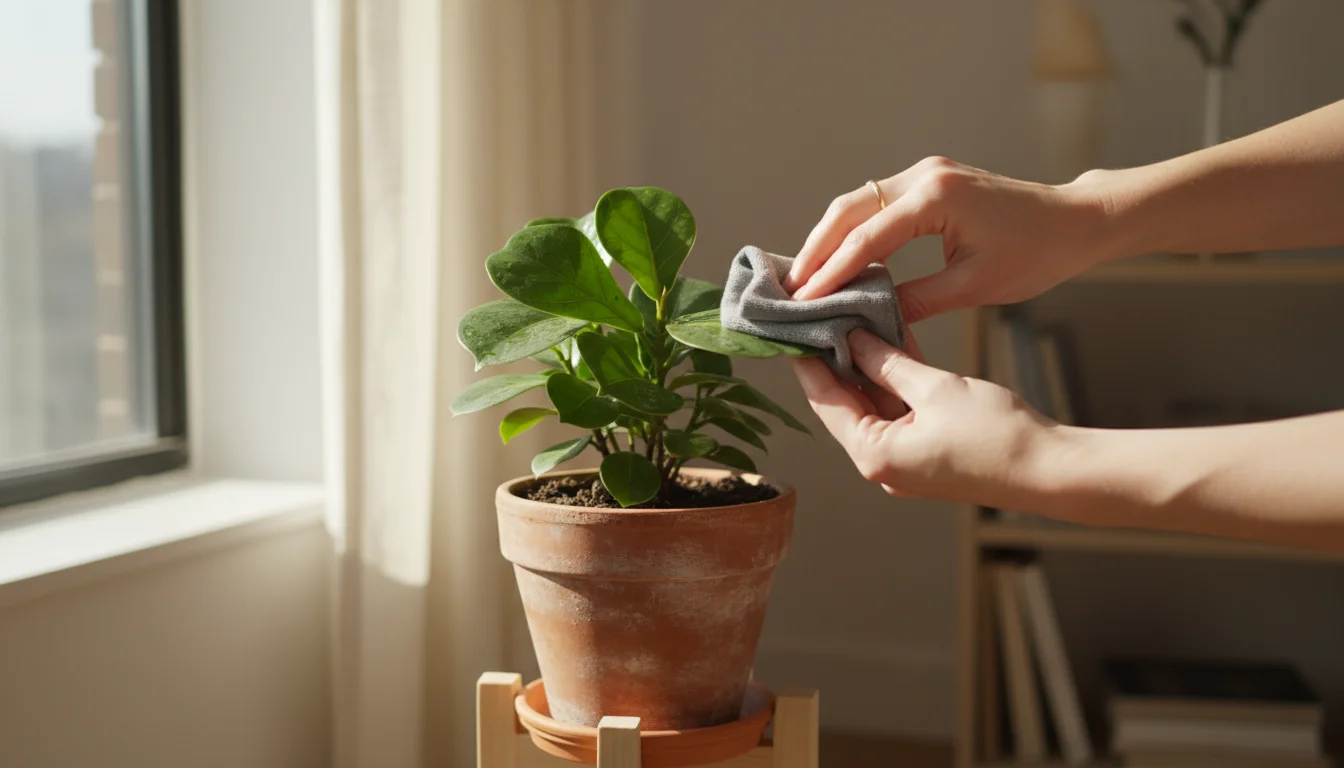
Managing Common Pests with Eco-Friendly Solutions
Pests can affect any indoor plant, including your trees. Early detection and swift, natural intervention prevent major infestations. Regularly inspect your plants, especially the undersides of leaves and stem joints, during your watering routine.
- Common Pests: Look for spider mites (tiny webs, speckled leaves), mealybugs (fuzzy white cotton-like masses), and scale (small, brown bumps on stems and leaves). Fungus gnats often indicate consistently damp soil.
- Integrated Pest Management (IPM): This approach emphasizes prevention and non-chemical solutions. The Royal Horticultural Society (RHS) offers comprehensive guides on IPM practices.
- Actionable Steps:
- Wipe Leaves: Use a damp cloth to regularly wipe dust and potential pests from leaves. This also improves photosynthesis.
- Insecticidal Soap: A mixture of mild dish soap and water (1 teaspoon per liter of water) or a commercial insecticidal soap effectively treats many soft-bodied pests. Spray thoroughly, ensuring coverage on all leaf surfaces.
- Neem Oil: An organic insecticide derived from the neem tree, neem oil disrupts pest life cycles. Follow product instructions for dilution and application. Apply it in a well-ventilated area, avoiding direct sunlight after application.
- Sticky Traps: Yellow sticky traps effectively catch adult fungus gnats, reducing their population. Address the underlying issue of wet soil to eliminate breeding sites.
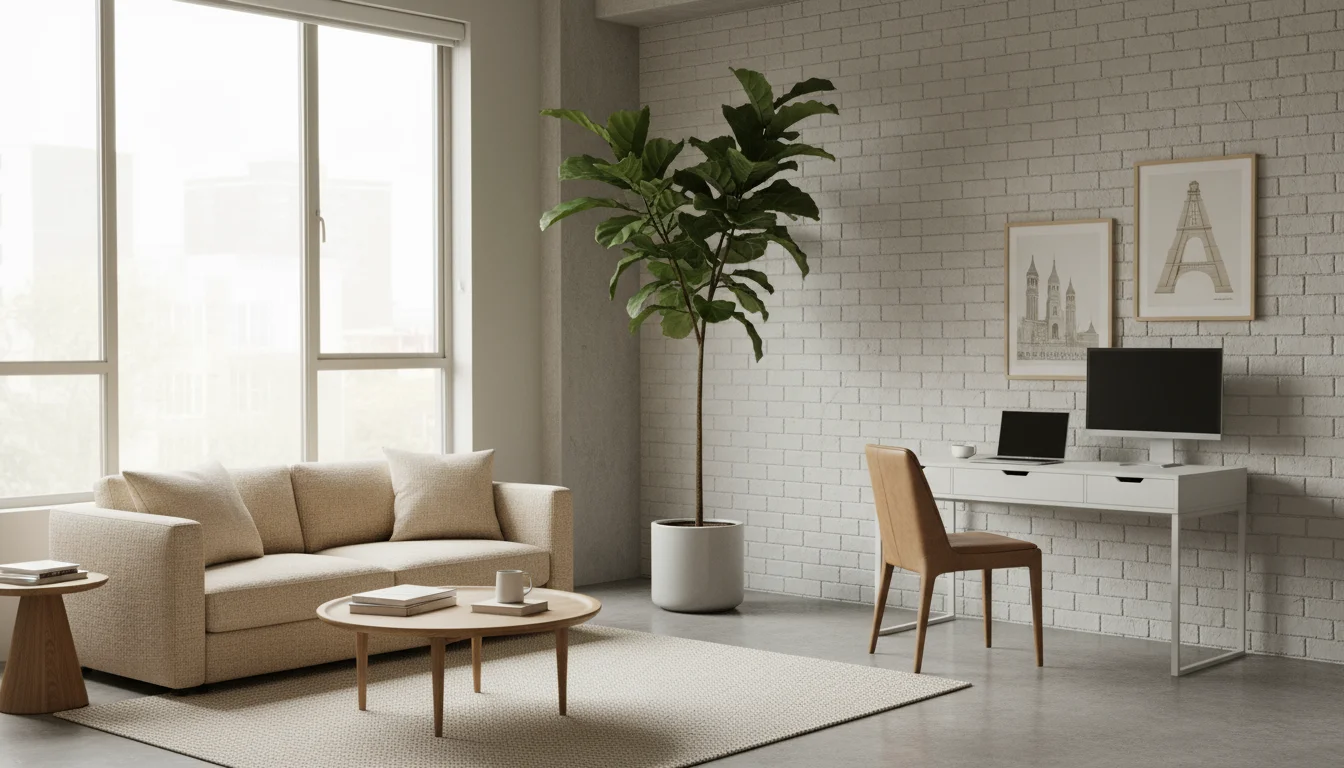
Styling and Placement for Small Spaces
Strategic placement transforms your indoor tree into a focal point without cluttering your apartment. Consider these tips:
- Corner Placement: A large indoor plant in a corner fills vertical space beautifully and utilizes often-unused areas.
- Vertical Impact: Choose tall, slender varieties to draw the eye upward, making the room feel larger.
- Defined Zones: Use a substantial indoor tree to subtly delineate areas in an open-concept living space, for example, between a living room and dining nook.
- Complementary Decor: Select a pot that enhances your existing decor. A simple, elegant pot allows the tree itself to shine.
- Pet Safety: If you have pets, always check the toxicity of your chosen tree. Many popular indoor trees are toxic to cats and dogs if ingested. Resources like the ASPCA provide comprehensive lists of toxic and non-toxic plants. Prioritize pet-safe options like Parlor Palm, Money Tree, or Norfolk Island Pine if your furry friends are curious chewers.
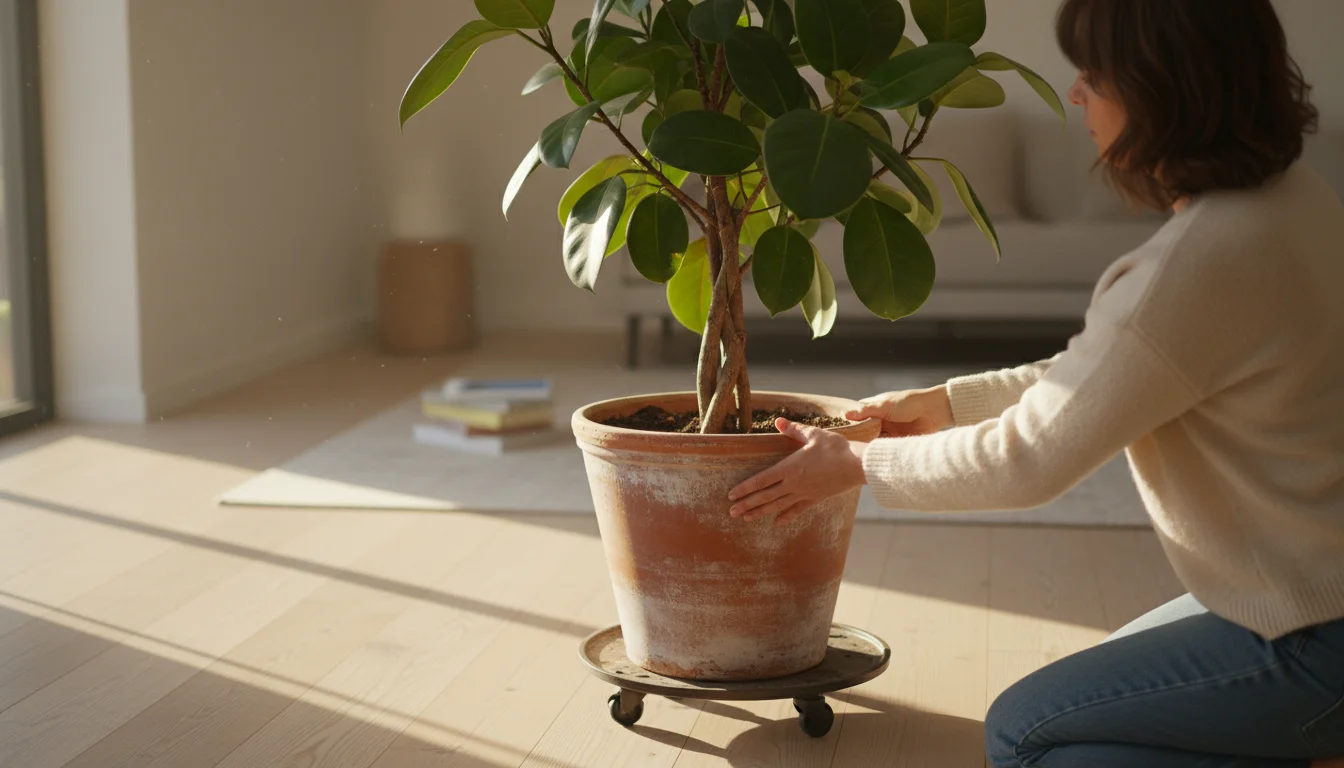
Seasonal Shifts and Long-Term Care: Keeping Your Tree Thriving
Your indoor tree’s needs shift with the seasons, impacting its growth, watering demands, and overall health. Understanding these cycles and adapting your care routine ensures the long-term vitality of your large indoor plants, even within a compact apartment environment.
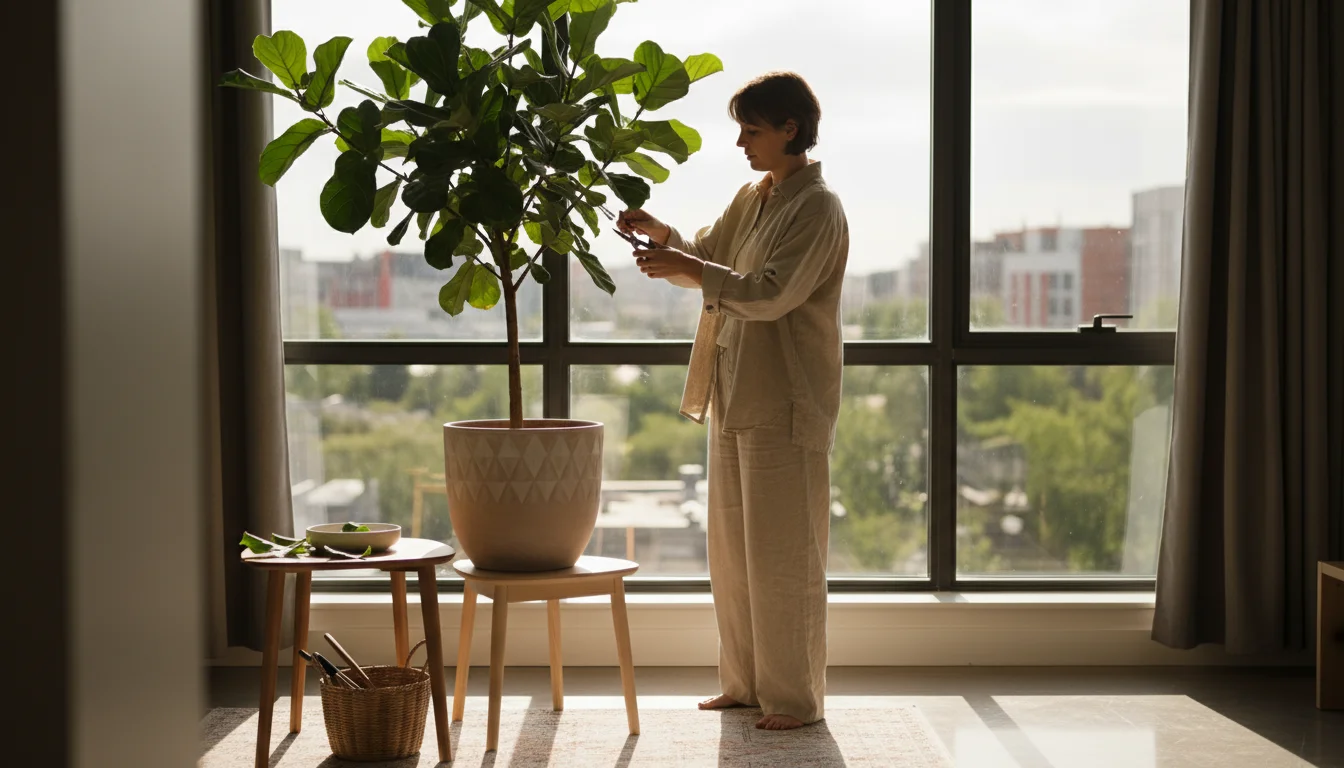
Adjusting to the Seasons
- Spring and Summer: Active Growth Period
- Watering: Your tree will likely require more frequent watering as temperatures rise and light levels increase. Always perform the finger test.
- Fertilizing: This is the prime time for feeding. Use a balanced liquid fertilizer diluted to half strength every 2-4 weeks. Choose an organic, low-impact fertilizer if possible.
- Light: Monitor light intensity. If you move your tree closer to a window, watch for signs of scorching.
- Pruning: Trim back any leggy growth or dead leaves. Pruning encourages bushier growth and maintains the desired size and shape of your indoor tree.
- Fall and Winter: Rest and Dormancy
- Watering: Reduce watering frequency significantly. Plants enter a semi-dormant state, using less water. Overwatering during winter is a common cause of root rot. Ensure the soil dries out more thoroughly between waterings.
- Fertilizing: Stop fertilizing completely during the cooler, darker months. Plants do not actively grow enough to utilize the nutrients, leading to a build-up of salts in the soil.
- Light: Light levels decrease naturally. Position your indoor tree in the brightest available spot, but avoid sudden exposure to very cold drafts near windows.
- Humidity: Indoor heating systems drastically reduce humidity. Increase your efforts to boost humidity during these months using pebble trays or grouping plants.
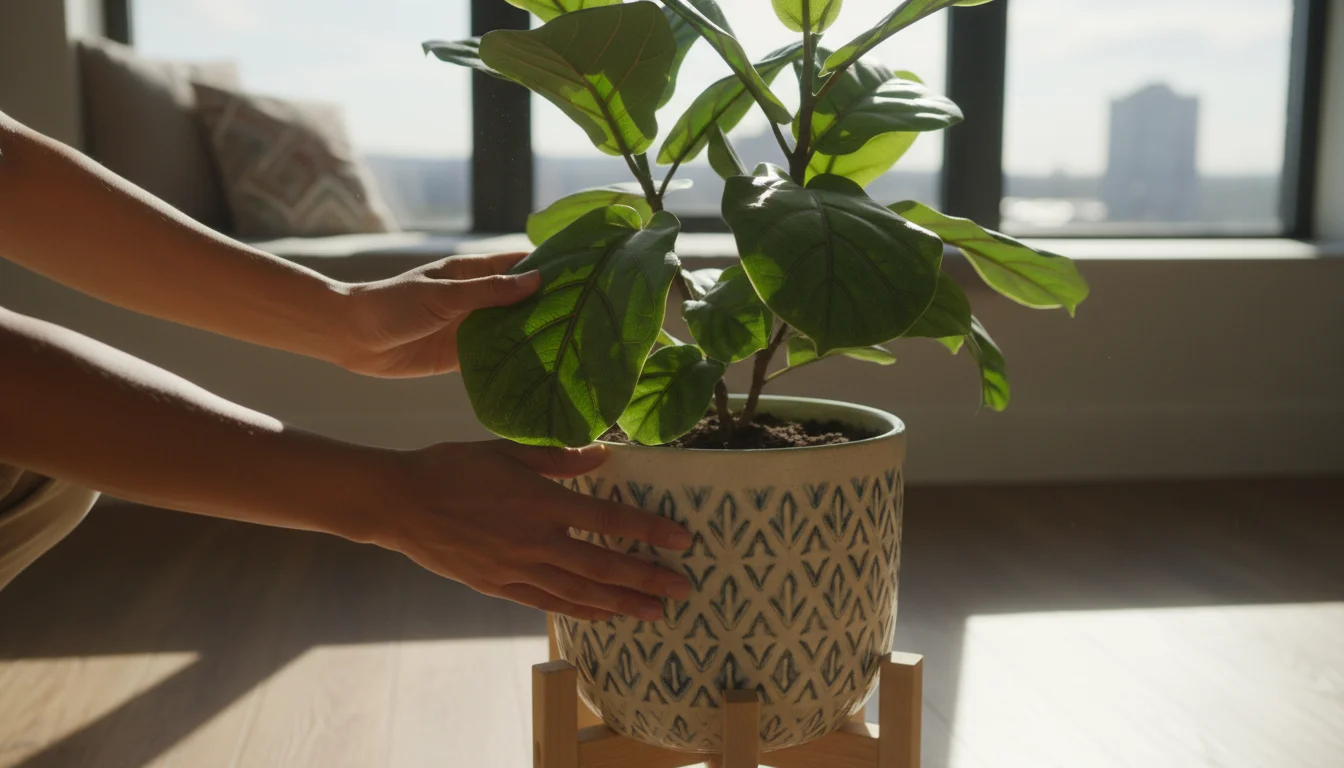
Long-Term Maintenance for Your Indoor Tree
- Cleaning Leaves: Regularly wipe dust from your tree’s leaves with a damp cloth. Dust blocks light, reducing photosynthesis. Clean leaves also look better and discourage pests.
- Pest Checks: Maintain regular inspections. Prevention is far easier than treating an established infestation.
- Rotation: Rotate your pot a quarter turn every few weeks. This ensures even light exposure on all sides, promoting symmetrical growth. Otherwise, your tree may start leaning towards the light source.
- Vacation Watering: If you plan to be away for more than a few days, consider self-watering devices, wicking systems, or placing your tree in a bathtub with an inch of water (for well-draining pots) for short periods. For longer trips, arrange for a plant-sitter.
These adjustments and practices ensure your indoor tree remains a healthy and impressive feature in your apartment for years to come.
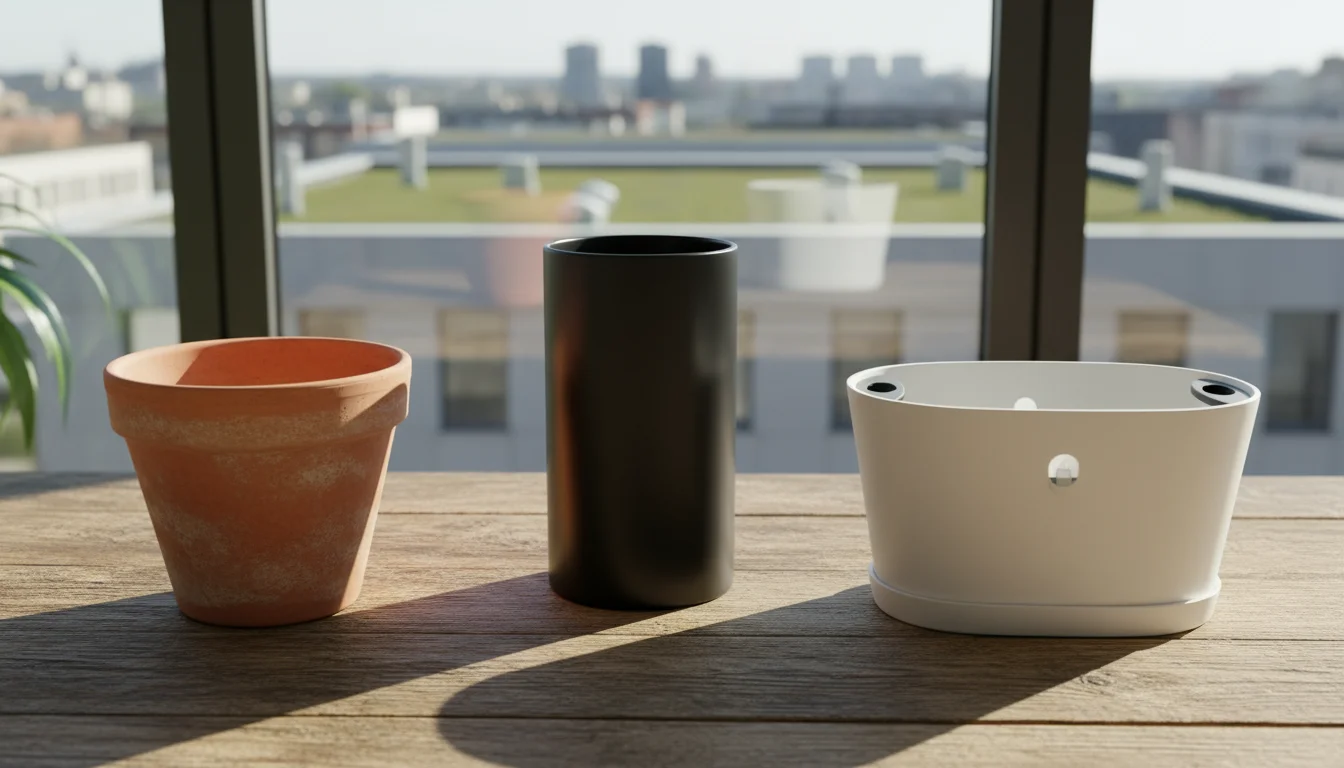
Choosing the Right Pot and Drainage for Your Indoor Tree
The pot you select plays a crucial role in your indoor tree’s health and appearance. It influences watering frequency, root health, and overall stability. For small apartment plants that grow into large indoor plants, careful pot selection prevents common issues and supports vigorous growth.
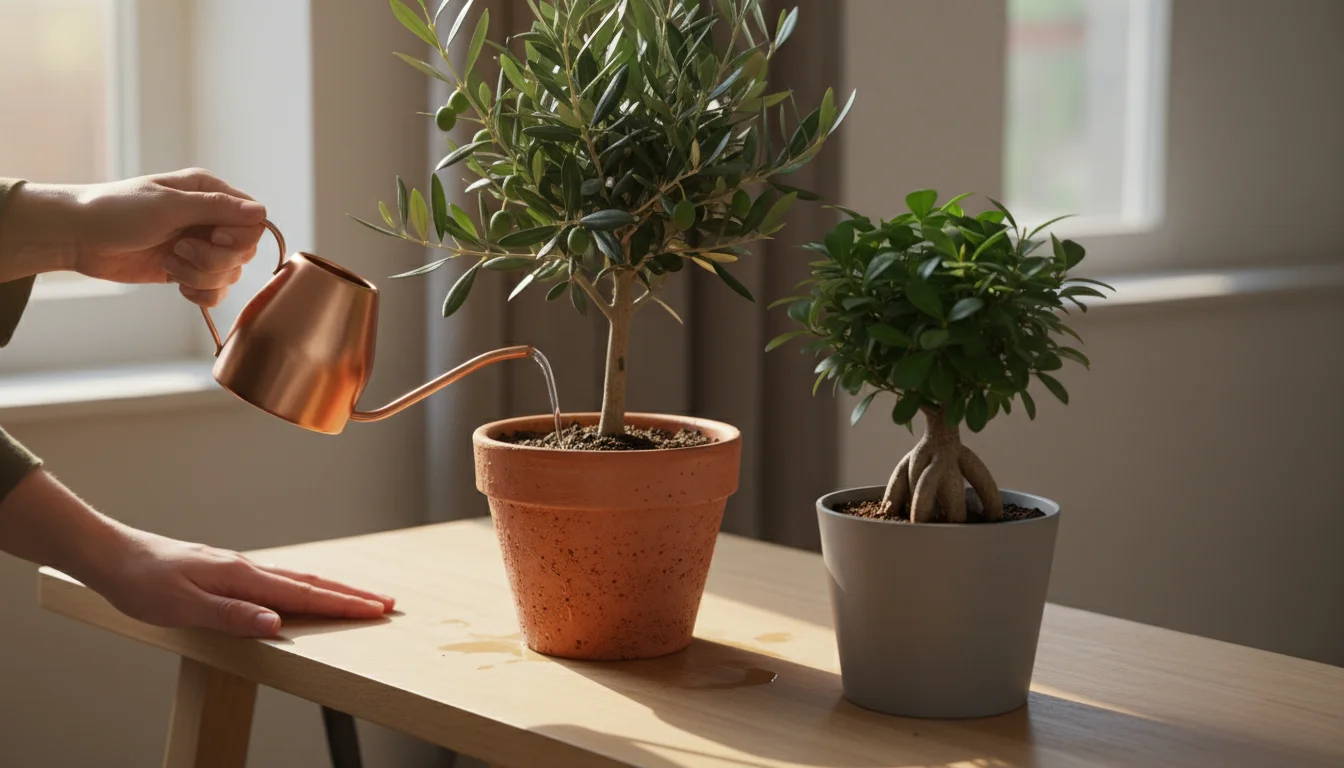
Pot Materials: Weighing Your Options
Different pot materials offer distinct advantages and disadvantages:
- Plastic Pots:
- Pros: Lightweight, inexpensive, retain moisture well (reducing watering frequency), durable, available in many styles.
- Cons: Can lead to overwatering if you are not careful, less breathable, can become top-heavy with larger trees.
- Best For: Trees that prefer consistently moist soil or for growers prone to underwatering.
- Terra Cotta Pots:
- Pros: Porous material promotes excellent air circulation to roots, allows soil to dry out faster (reducing root rot risk), offers a classic aesthetic.
- Cons: Heavy, brittle, water evaporates quickly (requiring more frequent watering), can leave mineral residue on the exterior.
- Best For: Trees that prefer their soil to dry out between waterings, or for growers who tend to overwater.
- Ceramic Pots (Glazed):
- Pros: Aesthetic appeal, heavy (providing stability for large indoor plants), retain moisture similar to plastic.
- Cons: Can be expensive, very heavy, non-porous (requires careful watering), can chip or break.
- Best For: Decorative cachepots or for plants that need good moisture retention.
When selecting a pot, always prioritize functionality over aesthetics. You can always place a functional nursery pot inside a more decorative cachepot.
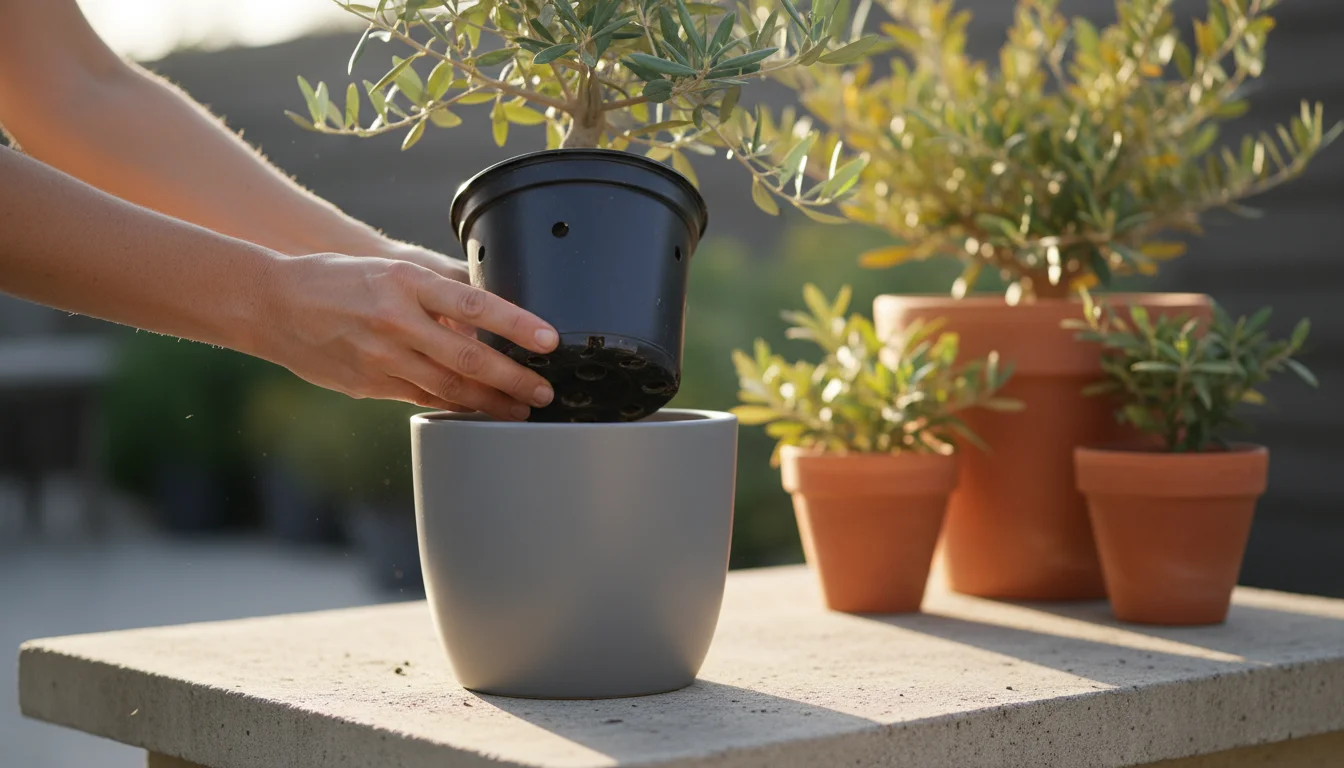
The Non-Negotiable: Drainage Holes
No matter the material, your pot absolutely must have drainage holes. Adequate drainage prevents waterlogged soil, which suffocates roots and causes root rot. If a decorative pot lacks drainage, use it as a cachepot:
- Plant your tree in a slightly smaller nursery pot with drainage holes.
- Place the nursery pot inside the decorative pot.
- When watering, remove the nursery pot, water thoroughly, let it drain completely, then return it to the cachepot.
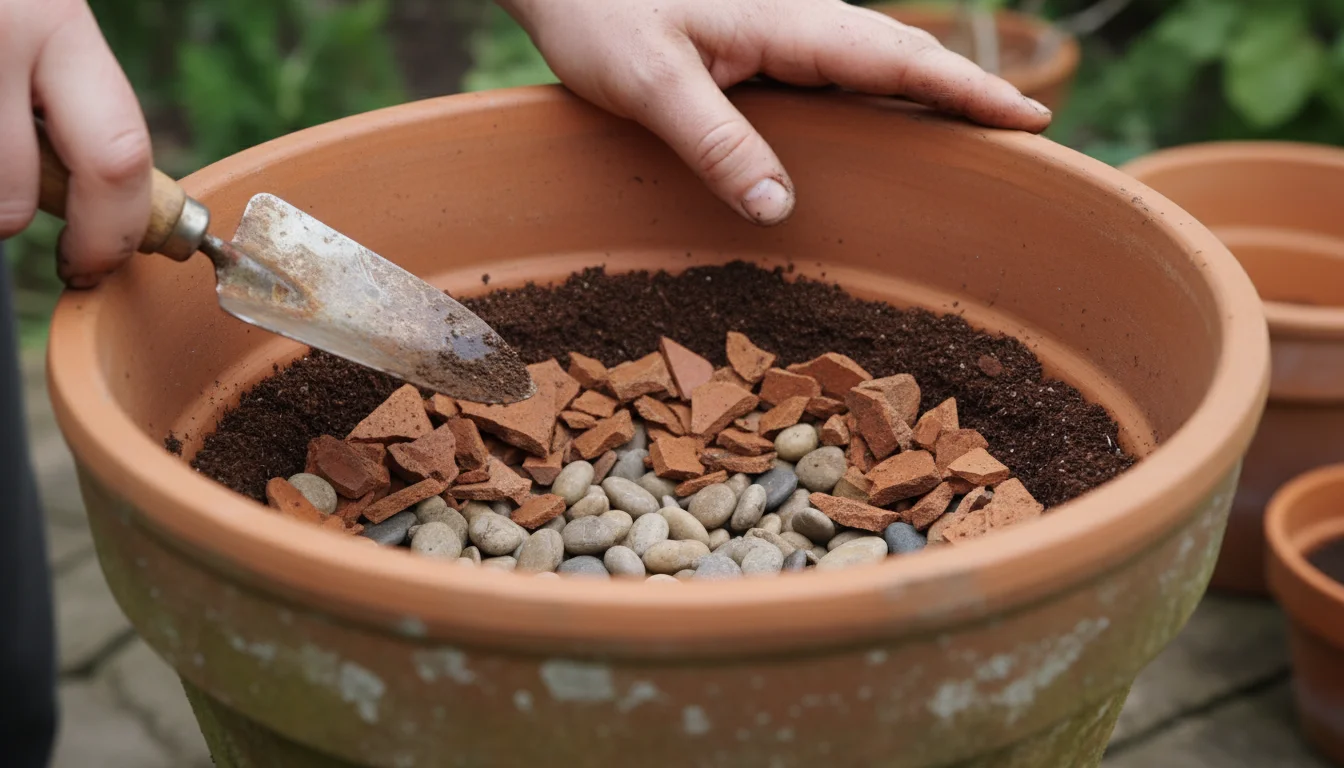
Debunking the Drainage Layer Myth
Many plant owners believe adding a layer of gravel, broken pottery, or packing peanuts at the bottom of a pot improves drainage. This is a common misconception. Instead of improving drainage, this practice creates a “perched water table.” Water accumulates at the interface between the potting mix and the drainage layer, actually *reducing* the amount of usable soil volume and making root rot more likely. Focus on using a well-draining potting mix and ensuring sufficient drainage holes, not on adding layers.
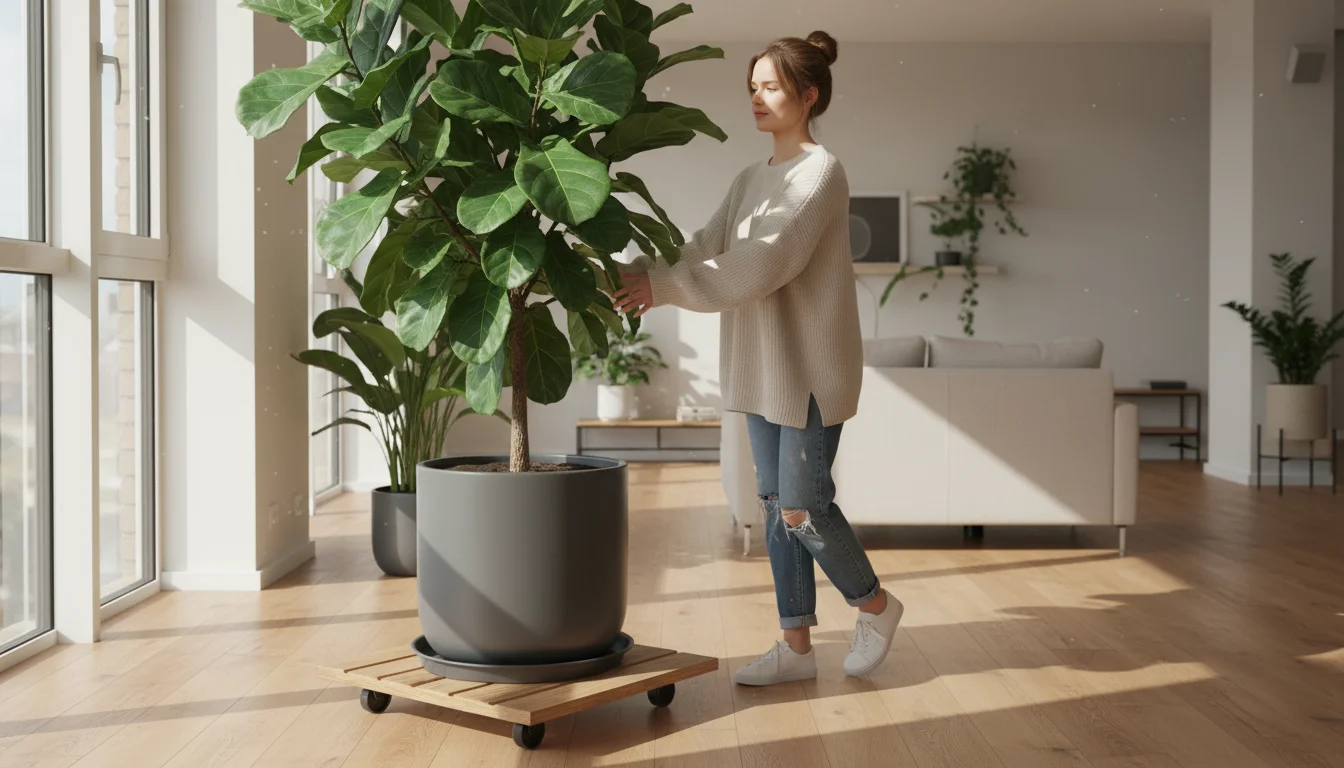
Saucers and Stability
Always use a saucer or tray underneath your potted indoor tree to protect your floors and furniture from water damage. For large indoor plants, a sturdy, wide saucer provides stability. Consider using a plant caddy with wheels for particularly heavy trees. This allows you to easily move your tree for cleaning, rotation, or seasonal light adjustments.
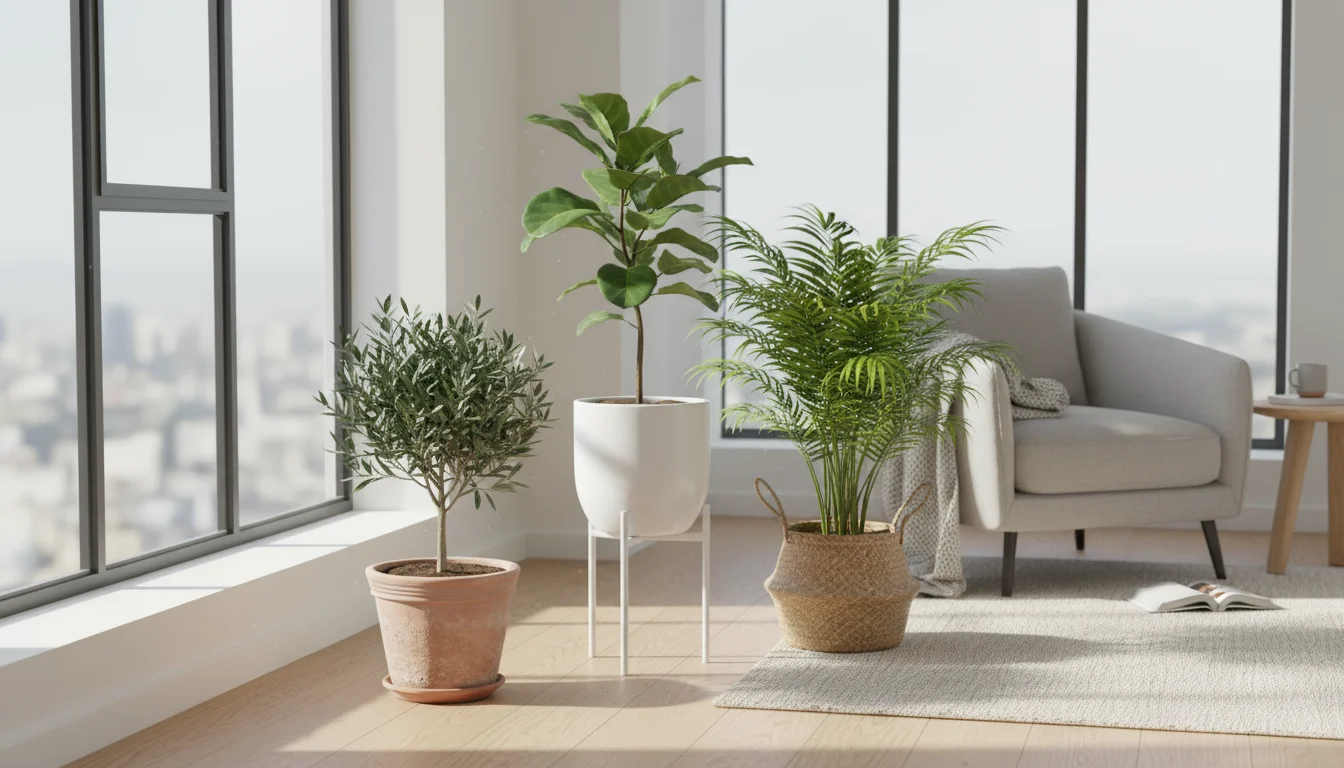
Frequently Asked Questions
How do I know if my indoor tree needs fertilizer?
Your indoor tree signals its need for fertilizer through slowed growth, smaller new leaves, or overall pale foliage despite adequate light and water. Fertilize only during the active growing season, typically spring and summer. Use a balanced liquid fertilizer at half strength every 2-4 weeks. Avoid fertilizing a struggling plant, as this can worsen issues. Ensure you select a fertilizer specifically designed for houseplants.
Can I put my indoor tree outside for the summer?
Yes, many indoor trees benefit from a summer vacation outdoors, receiving more light and fresh air. Acclimate them gradually to prevent shock or sunburn. Start by placing your tree in a shady, protected spot for a few hours daily, slowly increasing exposure over 1-2 weeks. Always bring your tree back inside before nighttime temperatures drop below 50-60°F (10-15°C) and inspect it thoroughly for pests before reintroducing it to your indoor plant collection.
What should I do if my indoor tree starts losing leaves?
Leaf drop indicates stress. Identify the cause by assessing recent changes. Common culprits include overwatering, underwatering, insufficient light, sudden temperature changes (drafts), or pest infestations. Review your watering habits using the finger test, check light levels, ensure consistent temperatures, and inspect for pests. Address the identified issue to prevent further leaf loss. Some leaf drop, especially lower leaves, is natural as trees age.
How often should I clean my indoor tree’s leaves?
Regularly cleaning your indoor tree’s leaves, ideally every 1-2 months, prevents dust buildup. Dust interferes with photosynthesis and can harbor pests. Use a soft, damp cloth to gently wipe both the tops and undersides of the leaves. This simple practice improves your tree’s health, enhances its appearance, and helps you spot potential problems early.
My apartment is very dry. What are the best humidity solutions for my tree?
In dry apartments, focus on consistent, localized humidity boosts for your indoor tree. Use pebble trays underneath the pot. Grouping plants together creates a humid microclimate. Ensure you keep the tree away from heating vents or drafts. For sensitive plants, a small humidifier placed nearby provides significant benefits. While misting offers temporary relief, it does not sustain humidity long-term and can encourage fungal issues.
